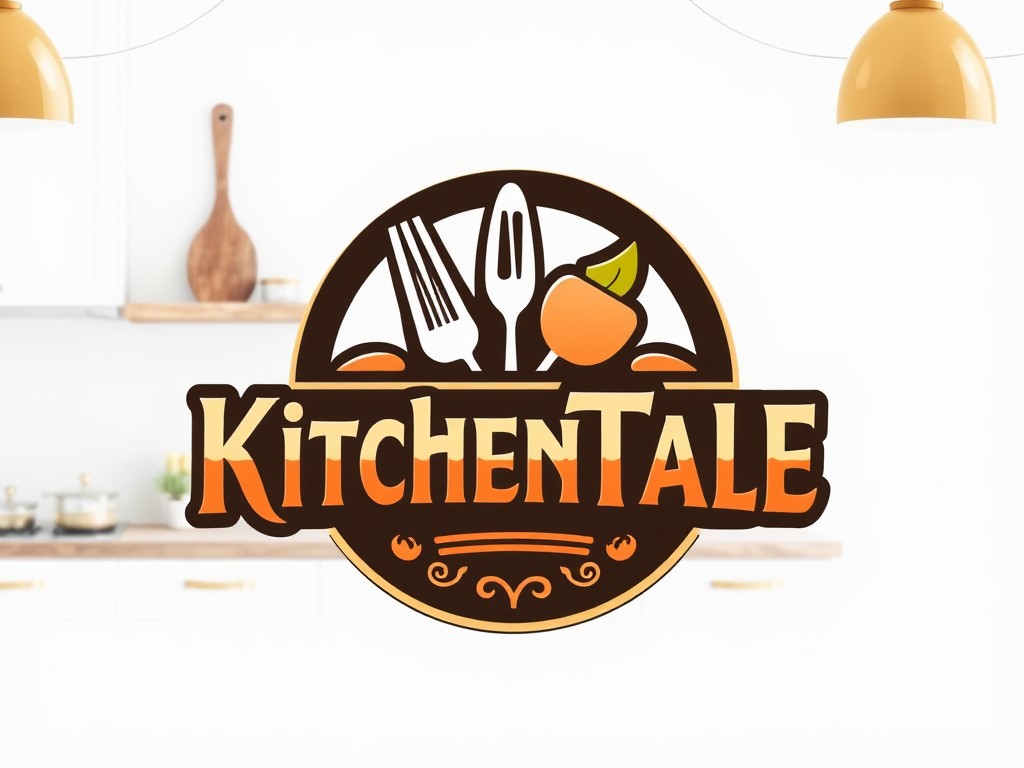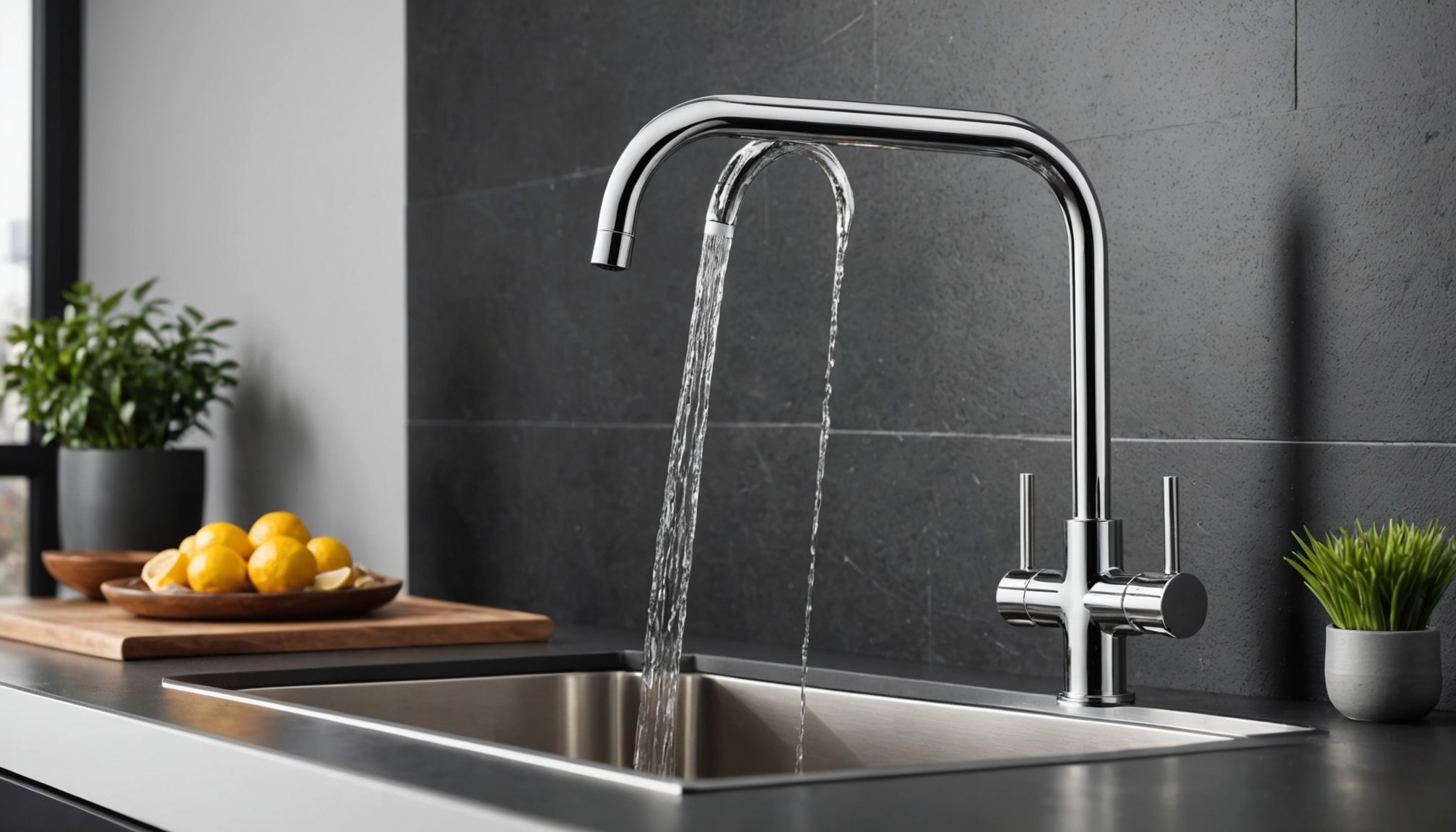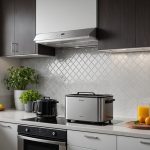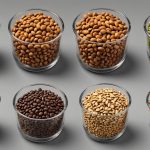Introduction to Water-Efficient Kitchen Taps
Incorporating water-efficient kitchen taps into your home is a small yet impactful step towards reducing water waste. This is crucial in our daily lives as water conservation becomes increasingly essential in combating the global water crisis. Understanding the water-efficient technologies that these taps offer can help make a significant difference.
Modern taps come equipped with features such as aerators and flow restrictors. These technologies mix air with water, maintaining a powerful spray while reducing the actual volume of water used. It’s like getting the same dishwashing results but with less water down the drain. By choosing such taps, homeowners effectively contribute to decreasing their environmental impact.
Also to read : Illuminate your stylish modern uk kitchen: a guide to selecting the ideal under-cabinet lighting
The environmental benefits of selecting sustainable kitchen fixtures extend beyond just reducing water usage. The process results in lower energy demand, as less water heating is necessary, translating to reduced greenhouse gas emissions. Furthermore, by adopting these sustainable kitchen fixtures, the burden on local water resources is eased, contributing to long-term water availability for communities.
In essence, opting for water-efficient kitchen taps not only enhances your home’s eco-friendliness but is a practical measure towards sustainable living.
Also to discover : The ultimate guide to selecting ideal kitchen flooring for your uk coastal home
Key Features to Consider
The features of kitchen taps can significantly impact your water usage, so it’s essential to consider elements like flow rate and aeration technology. These features not only enhance water conservation but also maintain sufficient pressure, ensuring functionality without wasting resources. Advanced aeration techniques mix air with water to reduce consumption while still providing a strong stream.
Focusing on materials and durability is crucial when choosing sustainable options for your kitchen taps. Stainless steel, for instance, not only resists corrosion but is also recyclable, aligning with an eco-friendly design. Opting for taps made with quality materials ensures longevity and reduces the need for frequent replacements, thus minimizing environmental impact.
Additional functions, such as temperature control and filtration systems, are gaining popularity among homeowners who prioritize health and convenience. Taps with integrated temperature control allow precise water temperature management, enhancing safety and comfort. Meanwhile, built-in filtration systems deliver clean, safe water directly from your tap, eliminating reliance on plastic bottled water and contributing to a more sustainable lifestyle.
Selecting the right features for your kitchen taps can transform your kitchen into an efficient, eco-conscious space, catering to both aesthetic and environmental needs.
Comparisons of Sustainable Kitchen Taps
In the quest for environmentally friendly choices, sustainable kitchen tap models are rising in popularity. Delving into product comparisons offers insights into which models make the greatest environmental impact. As consumers become increasingly eco-conscious, knowing the top brands can help in making informed decisions.
Review of High Efficiency Taps
With a focus on water conservation, high efficiency taps significantly reduce water usage. These models often incorporate aerators that mix air with the water flow, maintaining pressure while using less water. In terms of performance, these taps can earn Energy Star ratings, which highlight their sustainability credentials.
Budget-Friendly Sustainable Options
For those on a budget, there are various sustainable options available. Brands like EcoFlow provide cost-effective solutions without compromising on efficiency. These taps are designed to last, offering longevity that translates to savings over time.
Premium Quality Kitchen Taps
When it comes to premium quality, certain key brands lead the market. Models from companies like Grohe and Moen emphasize durability and sustainability, incorporating advanced technology to ensure minimal environmental impact. Although they come at a higher initial cost, their energy efficiency and long-term benefits provide a notable return on investment.
Installation Tips for Optimal Performance
When it comes to kitchen tap installation, having a solid understanding of the process is essential for ensuring long-term functionality.
To start, gather all necessary tools such as an adjustable wrench, basin wrench, and plumbers tape. Close the water supply to prevent leaks and position a bucket to catch any water remnants. Begin by removing the old tap, ensuring all fittings are unscrewed and set aside safely. Follow the manufacturer’s instructions closely when attaching the new tap, paying particular attention to the alignment and fixation of mounting plates.
Some plumbing tips to bear in mind include systematically tightening nuts to avoid over-stressing components, and ensuring seals are perfectly aligned to prevent leaks.
While a DIY installation can be an empowering task, certain pitfalls must be avoided. Misidentifying pipeline connections or over-tightening can lead to costly damages. If you’re not entirely confident in your skills at any step, consulting or hiring a professional plumber can save time and prevent potential mishaps. Many plumbers offer consultations for tricky installations, ensuring your tap performs at its best without premature wear.
Maintenance for Longevity and Efficiency
Maintaining your kitchen taps effectively is crucial in prolonging their lifespan and ensuring they function at peak efficiency. Regular kitchen tap maintenance involves simple, yet essential practices, such as cleaning the taps with mild detergents to prevent build-up of limescale and grime. Keeping them clean not only maintains their appearance but also helps avoid blockages that could affect water flow.
When it comes to repair tips, regularly check for leaks around the base, spout, and handles. Identifying leaks early can save water and prevent further damage that might require costly repairs. If you discover persistent drips, replacing the washer or cartridge inside can often resolve the issue.
To ensure optimal performance, it’s also beneficial to periodically assess your water quality. Poor quality water can lead to corrosion and other complications with your taps. Investing in water filters may be advisable in hard water areas to reduce mineral deposits that could harm tap components.
Lastly, quick troubleshooting tips can include:
- Tightening loose fittings,
- Using vinegar to tackle minor limescale build-ups,
- Ensuring all installation parts are secure.
These regular tasks significantly extend the usefulness of your kitchen taps.
Statistics on Water Conservation
In today’s world, the importance of water conservation is underscored by compelling water conservation statistics. Households are responsible for a significant portion of water usage, raising questions about how individuals can contribute to environmental sustainability. According to recent findings, upgrading to water-efficient fixtures, such as taps, can lead to a substantial reduction in daily water consumption. On average, these modern alternatives decrease household water usage by up to 30%.
The environmental impact data further supports these statistics, illustrating how such upgrades not only save water but also reduce energy consumption and carbon footprint. The link between water efficiency and reduced energy use is particularly crucial as less hot water used translates into less energy needed for heating.
Additionally, the conservation benefits of these initiatives extend far beyond immediate savings. Long-term effects include improved water quality, preservation of aquatic ecosystems, and reduced strain on municipal water systems. By understanding these statistics and making informed choices, homeowners not only save on their utility bills but also make a meaningful contribution to global environmental efforts.
Expert Opinions and Insights
Gain invaluable expert advice as we delve into current trends and preferences in kitchen tap design, drawing on insights from industry professionals. Interviews with plumbing experts reveal a strong emphasis on functionality and sustainability. Today’s kitchen tap recommendations lean towards models that incorporate features such as water-saving technology and smart temperature controls.
Plumbing experts highlight the importance of materials in taps, indicating a shift towards stainless steel and brass for durability and hygiene. Meanwhile, environmentalists advocate for taps designed with sensors or aerators to minimize water consumption. Government guidelines and consumer preferences drive this trend towards sustainability.
Industry insights suggest that ergonomic designs are gaining popularity. Consumers appreciate pull-down sprayers and easy handle operation, enhancing both aesthetic and practical value. According to interviews with key players, the best choices in modern taps reflect a balance: efficient water use, durability, and style.
Recommended brands often provide innovative warranty options, underscoring their commitment to consumer satisfaction. As technology advances, the integration of smart home systems with kitchen taps is another exciting development, poised to enhance convenience and efficiency in the modern kitchen.
Frequently Asked Questions
Selecting the right kitchen tap can be challenging, prompting a variety of consumer questions. One major query often revolves around finding taps with optimal water efficiency. So, how can you ensure your tap meets these standards? Check if they have a Water Efficiency label or certification, like the WaterSense label, which signifies reduced flow without compromising performance.
Functionality is another common concern. Consumers usually ask about taps with features like pull-out spouts or touchless operation. These can add convenience and efficiency to your kitchen tasks. Evaluate your needs and preferences to choose features that will enhance your daily use.
Lastly, if you’re looking for reliable information resources, consider exploring manufacturer websites or kitchen design blogs. These platforms often offer detailed product guidance, installation tips, and valuable user reviews to aid your decision-making process. Whether you are focused on style, technology, or cost-efficiency, these resources can make it simpler to navigate the myriad of options available.











